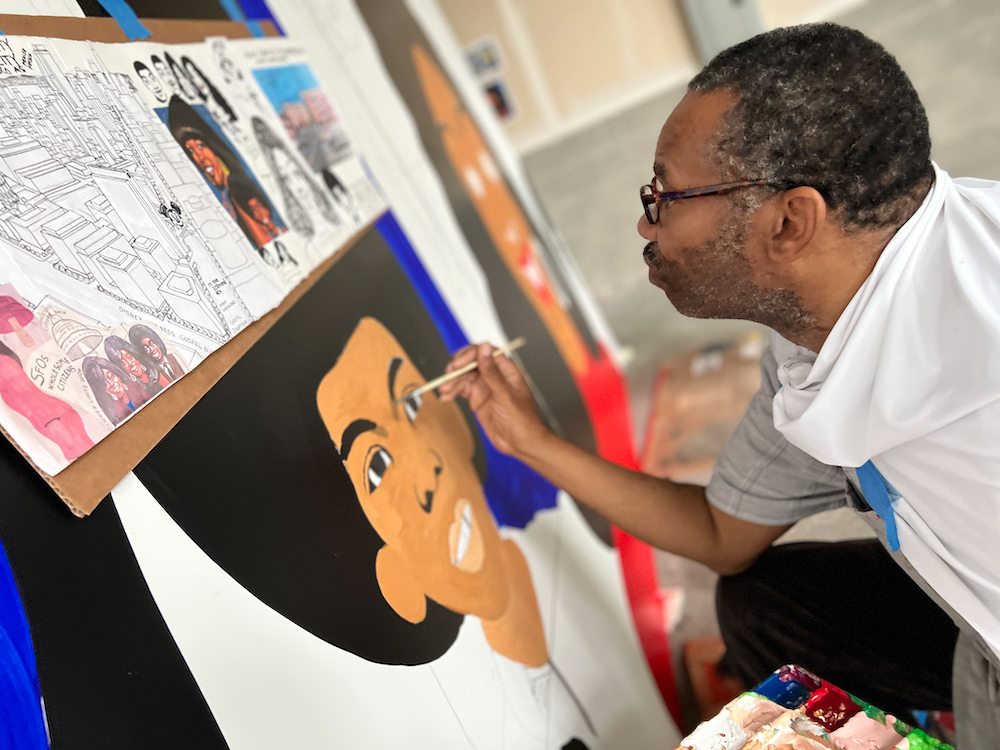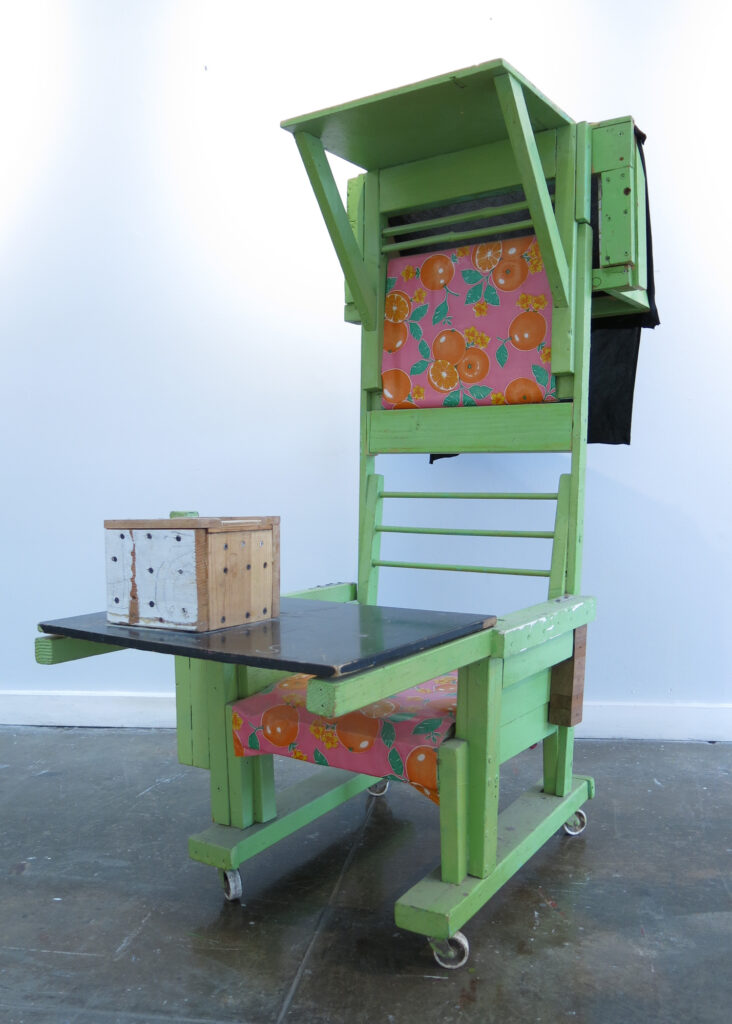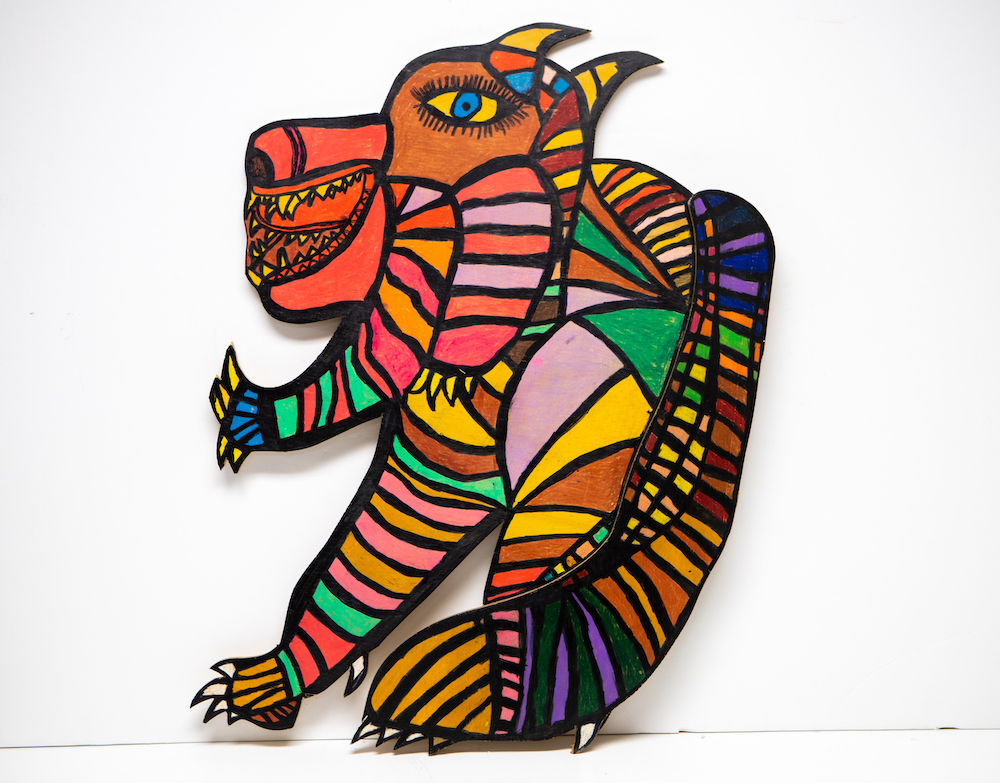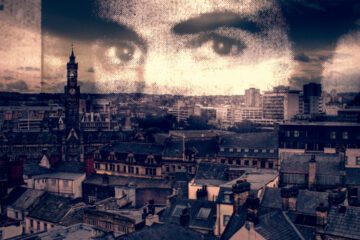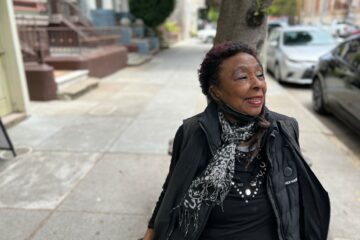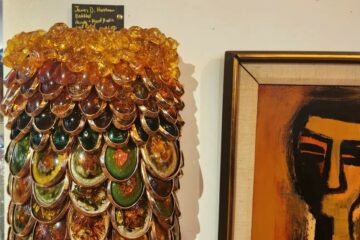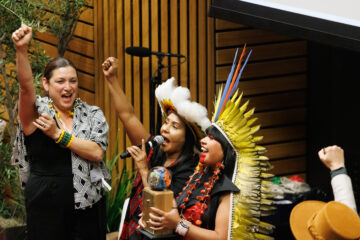In a Historic First, SFMOMA Has a Group Exhibition by Disabled Artists
By Bunny McFadden
San Franciscans have a chance to check out some dope art from disabled artists for free at SFMOMA from April 6-October 6. The exhibition, titled Creative Growth: The House That Art Built, centers around 115 pieces of art procured from Creative Growth Art Center, an organization in Oakland that’s been serving disabled artists for fifty years. In it, artists portray their emotions, craft, and experiences of disabled life in the Bay Area. We spoke with Tom di Maria, the Executive Director of Creative Growth, to find out more about this groundbreaking exhibition.
In a year when Downs Syndrome activists are advocating to be served by bartenders, move out on their own, and fight back against assumptions about whether they can curse (let them “speak fucking Shakespeare” for fuck’s sake!), this exhibit holds a lot of promise for more conversations around ableism in the art scene. “This is a really historic time for artists with disabilities around the world,” di Maria says. “It’s never been done by any contemporary museum before.” So what do SFMOMA and Creative Growth hope comes from this? “It’s a challenge to other institutions around the world, and in the art world,” di Maria says, “to really look to their own communities to who artists can be.”
Local Journalism for Working stiffs
We write for the poets, busboys, and bartenders. We cover workers, not ‘tech’, not the shiny ‘forbes 100 bullshit’. We write about the business on your corner and the beer in your hand. Join the Bay's best newsletter.
Because Creative Growth is run by artists rather than being an institutional or hospital setting, they are considered a model in the field of art and disability. Founded in 1974 during a time of social change, the organization purposely avoids directing or steering its artists toward any one material or process. For example, when they worked with now-deceased Carl Hendrickson, a woodworking artist with cerebral palsy who built his sculptures on his hands and knees in the studio, Creative Growth worked with a design team from the California College of the Arts to build adaptive tools and technologies that would allow Hendrickson to implement his vision. This kind of partnership is freeing in a way that disabled artists may not experience working with other traditional and more therapeutic-based institutions. And since they’ve been around for five decades, Creative Growth has had the time to experiment and see what works best. di Maria says this is a historic moment because now for the first time it demonstrates that “SFMOMA understands that the art and disability movement started in the SF Bay Area. We don’t know what happened in our own backyard.”
As of Tuesday, April 2, workers at Creative Growth announced an effort to unionize. We spoke with Sam Lefebvre, a one-on-one facilitator and member of Creative Growth United, who shares the reasoning behind these efforts. “I think of the job as facilitating the self-expression and self-determination of the artists we work with. In order to do that sustainably, we need a living wage.” Lefebvre also explained that the union will be calling for additional measures to bring the organization in line with other principles of Disability Justice.
“We’re very involved in supporting and creating access for our artists both in our center and in the way they experience the world,” di Maria says, “So SFMOMA has been clear with us that this exhibition is also a learning experience for them to look at access in a different way.” In addition to the exhibition, SFMOMA is debuting a brand new space on its second floor that is devoted to inviting visitors of all backgrounds and needs to participate and claim space in an industry known for being exclusive and inaccessible. According to their press release, the institution plans to have “interpretive displays, comfortable seating and opportunities to respond to the artwork [that] will engage a wide range of visitors with different learning and communication styles and needs.”
Like most non-religious and contemporary buildings, the museum is not exempt from the 1990 Americans with Disabilities Act (ADA), a piece of legislation that forced America to stop barring, literally, disabled people from participating in society. It has ramps, an accessible drop-off entryway, and other elements of accessibility. But this addition is going a step further by including seating, elements that help people with sensory issues, and more. di Maria notes that designing with access in mind isn’t cheap. But it’s also remarkable because, “those things aren’t legislated. Those things are ways that we are supporting the institution to really look at a diverse audience coming to this exhibition and meeting their needs.”
And not only will museums and other art institutions be challenged; visitors will also be exposed to what di Maria calls “the richness of the culture of disability that our artists will bring forth for the first time.” This is something that’s not just present in the Bay Area, but around the world. He says, “Many people don’t see that until it’s pointed out to them. There are some astonishing moments that will surprise and challenge people to see art in a new way.” di Maria thinks this is the perfect time for people who might not know how to interact with art to give it a shot. “Everyone will have a personal experience with the work that will be meaningful,” he promises.
he exhibit opens April 6 and consists of nine Creative Growth artists who were “carefully selected by the museum’s curators over a year,” di Maria says. “But we also want people to come to our gallery in Oakland.” The organization serves 140 artists who call the center on 24th Street their home gallery. “We want to share the visual pleasures of their work and the experiences of our community with as many people as possible.” Meanwhile, the union plans to host a rally “welcoming visitors to the exhibition” with free prints, snacks, and speakers from local sister organizations NIAD and Creativity Explored, with whom workers have been building momentum and solidarity, including forming Progressive Art Studio Staff for a Free Palestine (PASS). Lefebvre shares, “The union represents the workers who work very closely with the artists every day and develop really unique relationships with them. When one of the facilitators has to leave because they’re not making enough or their hours got cut, that causes a lot of grief and has a detrimental effect on the community in the studio. Our job security and sustainability relates directly to the quality of facilitation that we do with the artists.”
Bunny McFadden is a writer who lives in San Francisco (and in the hearts of bookworms and taco lovers everywhere). You can find more from Bunny on Instagram at @bunny.the.doc or on their website at docbunny.com.

Howdy! My name is Katy Atchison and I'm an Associate Editor for Broke-Ass Stuart.
I want to take the time to say thank you for supporting independent news media by reading BrokeAssstuart.com. Supporting independent news sources like Broke-Ass Stuart is vital to supporting our community because it amplifies the voices of a wide variety of diverse opinions. You also help support small businesses and local artists by sharing stories from Broke-Ass Stuart.
Because you're one of our supporters, I wanted to send over a pro-tip.
Our bi-weekly newsletter is a great way to get round ups of Broke-Ass Stuart stories, learn about new businesses in The Bay Area, find out about fun local events and be first in line for giveaways.
If you’d like to get our newsletter, signup right here, it takes 5 seconds.


